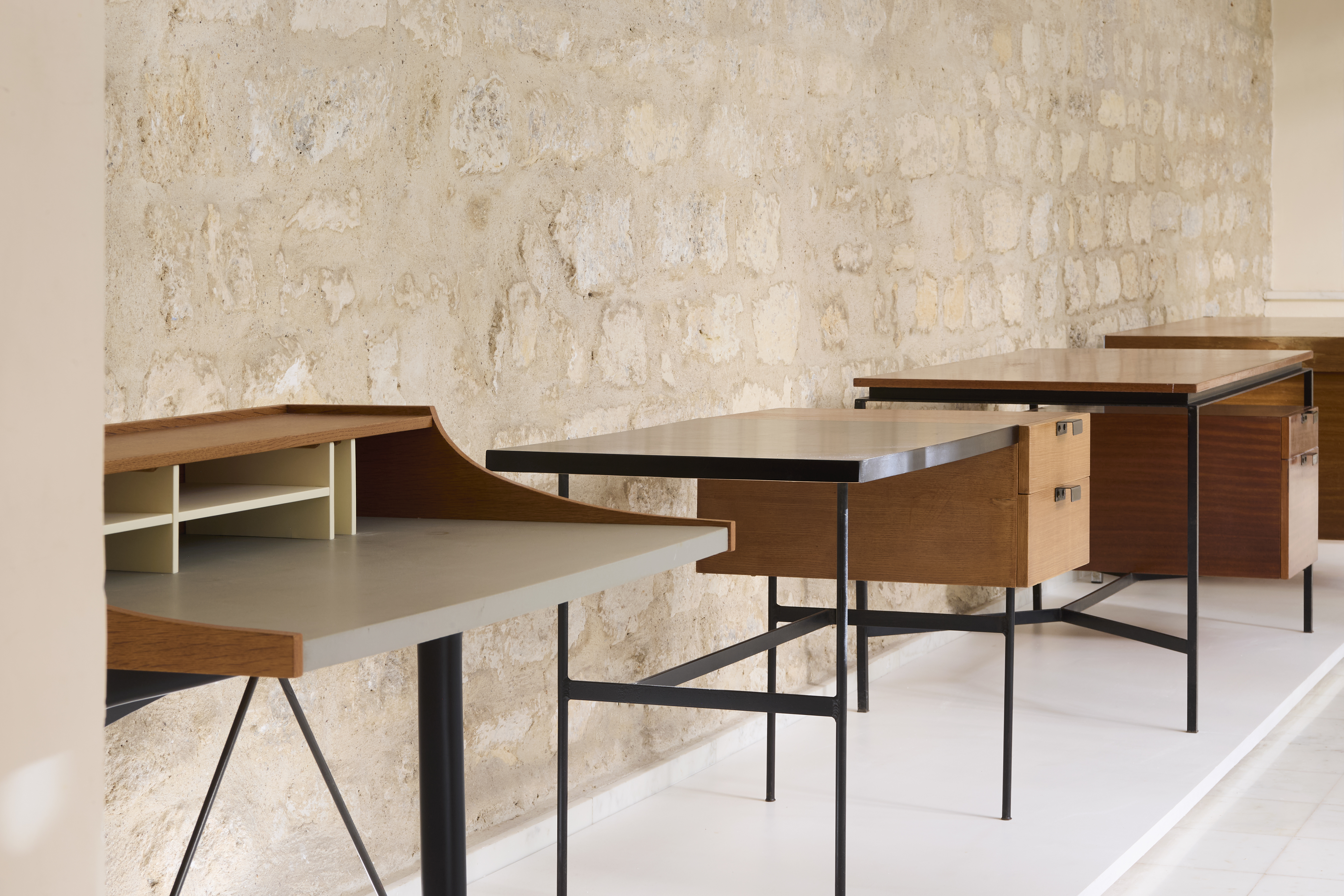A new exhibition retraces 50 years of Pierre Paulin’s history around the table
‘Les Tables de Pierre Paulin’ shows a lesser-known side of the designer’s creative world, accompanied by a new book tracing his wife’s hospitality around his iconic table designs. ‘A creator is never alone in his creation…’

Paulin, Paulin, Paulin, the French design agency who preserves the works of Pierre Paulin, goes far beyond heritage management. Founded as a family business in 2008, with Benjamin Paulin (son of the iconic designer Pierre Paulin) as the protagonist, the firm evolves versions of certain masterpieces, or never-produced prototypes, by editing and bringing to light various aspects of Paulin’s works, in this instance, with the exhibition 'Les Tables de Pierre Paulin'. ‘This subject has hardly been explored before. [When we speak of] Paulin, people immediately think about comfortable furniture, or upholstered seats. We wanted to narrate another side of my father’s works’, says Benjamin Paulin as he gives us a tour of the exhibition.
Les Tables de Pierre Paulin

Pierre Paulin and the 'Cathédrale' table
The showcase starts with a series of desks that Paulin created, often for Thonet France, during the latter half of 1950’s . Throughout this period, Paulin’s focus was on functionality and finding a solution for a lack of space. As an admirer of Alvar Aalto, the pioneering modernist, Paulin was fascinated by one of his inventions in 1954: the 'Fan Leg' (a layer of thin L Legs, made into a palm-leaf shape that is joined to the table top as if in a single block).
Paulin’s years of experimentation, playing with convexity and concavity of any bended part, resulted in the emblematic 'Elysées' series in 1972 (which included a table, a chair and a desk). It was originally designed for Georges Pompidou, who was in residence as the French president within Palais de l’Elysées at the time.

'Pieds Elysée', details
‘Through this concept, he wanted to unite Aalto’s 'Fan Leg' and the pedestal of Saarinen’s 'Tulip'’, says Paulin. As a man of the Zeitgeist period, Paulin actively applied the techniques of that time to his works, which can be seen throughout the aluminium cast pedestal of the 'Elysées' table and chair with a paint used by Nasa for the Apollo spacecraft.

At one corner of the show, the white lacquered aluminium structures cast graphic shadows on the aubergine-coloured round rug. The grid-like 'Cathedral', the organic floral shape 'Rosace' and the spider-web-inspired geometric 'Spider', look like meticulously folded Origami. The glass table-tops propped against the wall allow us to picture what they would have looked like. Toward the end of the exhibition, a few pieces, one of which is 'Cage à Poule', hint at an East Asian influence which informed Paulin’s designs. In the courtyard an outdoor set titled 'Miami' takes centre stage, which includes a low table, and chairs which were developed for Herman Miller during 1968-1972. Crafted from fibreglass and finished with a gel coat, which mimics the hull of a boat, it is another example of his challenging approach to new materials.

A collection of dishes in white and aubergine hang against the wall, which were designed for 'Manufacture de Sèvres' in the late 1980's, are also enriched with archival photographs and handwritten explanations on Paulin’s various design steps. ‘Usually there are motifs or drawings on Sèvres porcelain. But my father focused on the shape. It was the first time that Sèvres accepted this kind of proposition’, Benjamin Paulin proudly shared.

The exhibition’s opening coincides with the launch of the book Les Tables de Maïa et Pierre Paulin . For Maïa, the designer’s wife (now 81 years old), a valuable support, and great cook and hostess, a table is not just a piece of furniture but the centrepiece of joyful and beneficial encounters. Paulin shared, ‘This book retraces 50 years of Paulin’s history around the table. How my mother created a community and brought people around the table, with delicious meals and beautiful presentations. A creator is never alone in his creation…’ Besides photographs and drawings of the French designers' beautiful table designs, the book includes Maïa’s recipes and personal snapshots of carefully crafted lunches and dinners. Accompanied with this narrative, new creative life is injected into Paulin’s forever iconic furniture.
Receive our daily digest of inspiration, escapism and design stories from around the world direct to your inbox.
Les Tables de Pierre Paulin at Paulin, Paulin, Paulin, through December 2024. paulinpaulinpaulin.com By appointment only: rendezvous@paulinpaulinpaulin.com



Minako Norimatsu is a Japanese journalist and consultant based in Paris. Extremely curious about everything creative, her field ranges from fashion to art, dance, hospitality and travel. She has interviewed many Japanese fashion designers and artists for Wallpaper*, as well as non-Japanese creatives whose inspirations are drawn from Japan.
-
 The international design fairs shaping 2026
The international design fairs shaping 2026Passports at the ready as Wallpaper* maps out the year’s best design fairs, from established fixtures to new arrivals.
-
 The eight hotly awaited art-venue openings we are most looking forward to in 2026
The eight hotly awaited art-venue openings we are most looking forward to in 2026With major new institutions gearing up to open their doors, it is set to be a big year in the art world. Here is what to look out for
-
 This modern Clapham house is nestled indulgently in its garden
This modern Clapham house is nestled indulgently in its gardenA Clapham house keeps a low profile in south London, at once merging with its environment and making a bold, modern statement; we revisit a story from the Wallpaper* archives